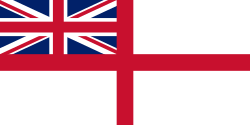History
The original office of Comptroller of the Navy was established in 1561 during the reign of Elizabeth I of England which was a very different function from what became known later as the Controller of the Navy. They presided over the Navy Board from 1660, and generally superintended the business of the Navy Office, they were responsible for all naval spending and for the offices dealing with bills, accounts and wages during the sixteenth and seventeenth centuries. [1] By the eighteenth century the principal officer responsible for estimating annual stores requirements, inspecting ships' stores and maintaining the Fleet's store-books and repair-bills was the Surveyor of the Navy however their duties passed increasingly to the Comptroller of the Navy during the latter half of this period. The office of the Surveyor did not altogether disappear. In 1805 for the first time, specific functions were assigned to each of the 'Naval' Lords, who were described as 'Professional' Lords, leaving to the civil lords to the routine business of signing off all official documents. [2] In 1832 the original office of the Comptroller was abolished following a merger with the Board of Admiralty and the Surveyor was made the officer responsible under the First Sea Lord for the material departments. [3] In 1859 the office the Surveyor of the Navy who had overall responsibility for ship design was renamed and the post became known as the Controller of the Navy. [4]
In the re-organisation of the Admiralty by Order in Council of 14 January 1869, the Controller of the Navy was given a seat on the Board of Admiralty as the Third Lord and Controller of the Navy. They also inherited the new duties of the Storekeeper-General of the Navy, whose post was abolished. [5] The Controller lost the title of Third Lord and the seat on the board by an Order in Council of 19 March 1872, but regained them by a further Order in Council of 10 March 1882. [6] In 1872 they again became subordinate to the First Sea Lord, but had the right to attend board meetings when the business of the department was under discussion. In 1882 the Controller again became independent of the First Sea Lord and became a board member again as Third Naval Lord and Controller. The Third Naval Lord's post was renamed to become known as the Third Sea Lord and Controller in 1904. The appointment of Controller of the Navy was abolished in September 1912, although that of Third Sea Lord remained. [7] Thereafter, except for a period in 1917 to 1918 when there was a civilian Controller, the titles of Third Sea Lord and Controller of the Navy went together. [3]
The Third Sea Lord and Controller was mainly responsible for superintending the work of the Royal Naval Scientific Service and for a number of Admiralty departments, including those of the Department of the Director of Naval Construction, (from 1958 the Department of the Director General Ships), of the Department of the Engineer in Chief (formerly the Steam Department), of the Department of the Director of Naval Ordnance, of the Department of the Director of Dockyards and, following a board decision in 1911, of the Admiralty Compass Observatory, formerly under the control of the Hydrographer's Department War they also had responsibility for the supply of equipment to Combined Operations Headquarters. From 1958 the Fourth Sea Lord was also known as Vice Controller of the Navy they assumed the superintendence of the naval dockyard organisation and the maintenance of the fleet. In 1965 the appointment of Third Sea Lord was abolished and the individual responsible for the materiel side of the navy became simply Controller of the Navy. [8] From 2003 until April 2013 the post holder jointly held different titles such as Director, Land Maritime, 2003–2006, Director-General, Nuclear, 2006–2009, Capability Manager/Director (Precision Attack), 2009-2012 and Director, Maritime Capability and Transformation, 2012–2013. From April 2013 until November 2018 the post holder simultaneously held the titles of Assistant Chief of the Naval Staff (Capability) and Chief of Staff Navy Command (HQ) post holders include: [9] From November 2018, the post holder has been just Assistant Chief of the Naval Staff (Capability). ACNS Capability is also known as Director Develop as of September 2020. [10]
This page is based on this
Wikipedia article Text is available under the
CC BY-SA 4.0 license; additional terms may apply.
Images, videos and audio are available under their respective licenses.



